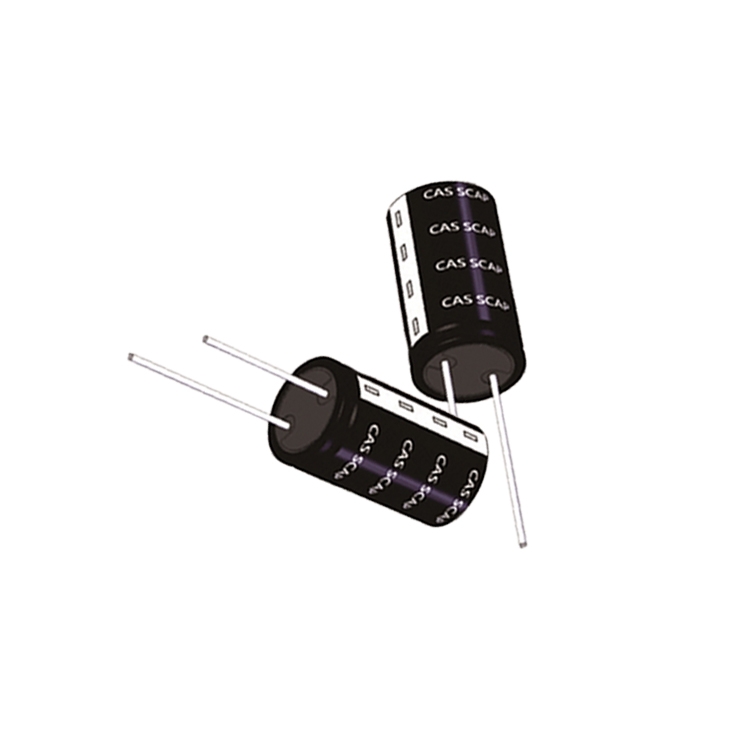Consulting phone:
135-3037-2041
(Mr.Wang)
Supercapacitors are a new type of energy storage device between traditional capacitors and batteries, and their electrode materials are mainly divided into three types: carbon materials, metal oxides, and conductive polymers.
The application of non-metallic minerals to supercapacitors can be roughly divided into 3 situations:
1) As an active material for electrodes;
2) Used as a template to prepare electrode materials, mainly involving minerals with special structures;
3) As a carrier material for composite electrodes, it mainly involves minerals with special structures.
1. Electrode active material
Lithium ion supercapacitor is a new type of capacitor with high specific energy and high power, which is characterized in that the positive electrode (or negative electrode) material is an intercalation electrode material with lithium ion deintercalation function, and the other electrode is an electric double layer storage battery. energy material. Similar to Li-ion batteries, natural graphite can be used as anode material for Li-ion supercapacitors.
Lim et al. obtained a hard carbon coating by loading polyacrylonitrile on natural graphite and then heat treatment, which improved the power density and cycle performance of lithium-ion supercapacitors, and the capacity retention rate was 74.6% after 10,000 cycles.
In addition, natural graphite can also be used as a cathode material for lithium-ion supercapacitors. Wang et al. constructed a new type of lithium-ion supercapacitor with natural graphite as the positive electrode and lithiated graphite as the negative electrode. Under the power density of 0.22~21.00kW/kg, the energy density is 167~233Wh/kg, which has very excellent electrochemical performance.
In addition to natural graphite, other minerals have also been reported in small amounts as active materials for supercapacitors. For example, cerulis indigo (CuS) and chalcocite (Cu2S) can be used as supercapacitor electrode materials. After grinding ilmenite and rutile into nanoparticles, they can also be used as supercapacitor electrode materials. After acid treatment and heat treatment of ilmenite and rutile, the electrochemical performance of the mixed sample was significantly improved.

2. Template material
Mineral deposits such as montmorillonite, halloysite, and diatomite have specific nanoscale traces, and are often used as templates to form electrode materials such as carbon and conductive polymers with specific traces. Now, a variety of mineral deposits have been used as templates to form porous carbon materials, including: natural zeolite, attapulgite, diatomite, serpentine, halloysite, montmorillonite, kaolinite and calcined of iceland stone and other minerals.
The porous carbon composed by the template method has good electrochemical performance due to its abundant pore structure. For example, Zhang et al. used kaolinite as a hard template to controllably form a porous nanocarbon material with a specific capacitance of 286F/g and a specific capacitance of 85F/g at a current density of 100A/g, showing good rate capability. Zhang et al. loaded resin on halloysite and then carbonized at high temperature. After removing the template, a mesoporous tubular carbon material was formed. In 6mol/L KOH electrolyte, the specific capacitance reaches 232F/g at a current density of 1A/g; the capacity retention rate is 95.3% when cycled for 5000 times at a current density of 5A/g. In addition, modification treatments such as doping of porous carbon can further improve the electrochemical performance of the material.
Conductive polymers are a common type of supercapacitor electrode materials, and specific traced conductive polymers can also be formed using the mineral template method. Fan et al. used halloysite as a template to form tubular polyaniline (PANI). After carbon coating, the electrode had a high specific capacitance of 654 F/g at a current density of 1 A/g, and the specific capacitance remained after 10,000 cycles. maintained at 87% with excellent cycle performance.
Metal oxides are also important supercapacitor electrode materials. Li et al. used diatomite as a template to form a sheet-like MnO2 electrode with good electrochemical performance.
To sum up, mineral deposits have the advantages of abundant content and low price as templates, but a large amount of acid (such as hydrofluoric acid) is often used in the process of template removal, which is a major disadvantage.
3. Electrode carrier material
Loading the active material on the surface of mineral deposits such as montmorillonite and halloysite can control the specific tracing of the active material, and due to the stability of the mineral structure, preventing the agglomeration of the active material can improve the specific capacitance and cycle stability of the material. The supported active materials are mainly carbon materials, conductive polymers, metal oxides, metal sulfides, etc.
For example, carbon materials can be used for supercapacitor electrodes after compounding with minerals such as kaolin, halloysite, montmorillonite, and attapulgite. After the conductive polymer is compounded with montmorillonite, sepiolite, halloysite, attapulgite, conductive mica, etc., higher conductivity and specific capacitance can be obtained, and the performance has been significantly improved.
Wu et al. prepared PANI/halloysite nanocomposites and graphene oxide nanosheets to form a composite film, which has good flexibility, strong tensile strength (351.9MPa) and ultra-high electrical conductivity (397.0S/cm ), an all-solid-state flexible supercapacitor with no capacity decay after 5000 times of bending.
The metal oxide (or sulfide) electrode has a high theoretical specific capacitance, but the specific capacitance in practice is much lower than the theoretical specific capacitance. Compounding improves its electrochemical performance.
In addition, mineral deposits can be combined with carbon materials, conductive polymers and metal oxides (sulfides) to form multi-component composite materials, which often have more excellent properties.